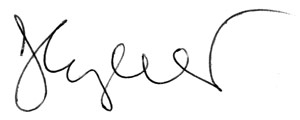Basic Considerations regarding the Tongue
From my experience, tongue movements pose a serious challenge to sound production. Well, maybe not a real challenge, but rather an aspect one needs to pay quite some attention to. After all, we cannot see our tongue moving. And imagining its movement seems somewhat strange. While we are all used to moving our tongue all day long, moving it intentionally is rather more difficult. This may be because we hardly ever think about our tongue.
The right Starting Position
Which position is the correct one? What can I say: it depends! Although there is an advantageous position (from an anatomical point of view), there is no one-size-fits-all explanation regarding which point the tongue should hit. It inherently depends on how soft or how hard I want to “hit” and on how fast the tongue needs to move. As well as on the octave I’m playing in, whether I need to play short or long notes, tenuto or staccato… I wish there was an easy answer!
In a relaxed position, the tongue is a “thick lump” that fills the mouth cavity up to the palate. Let us therefore try to imagine or make an educated guess about what the perfect starting position might be: active, not tense, anatomically useful. One of my students told me her previous teacher had explained to her that the right tongue position would be one where one is about to say “yayday”. The tongue lies flat in the mouth, its sides along the slightly opened teeth do not move, the tongue tip is active and flexible, while the tongue base is relaxed. What an excellent concept! Try it out for yourself:
- Pronounce the imaginary word “yayday” several times at a comfortable pitch;
- Pay attention to the sides of your tongue – and try to sense what the tip does. When the tongue touches the palate, its edges should not move. I’m referring to the tongue placement for the “yay” part!
- Now move on to “yayday-day-day-day-day” and continue to breathe out.
Let’s get Moving
The point I want to make is that articulation is closely related to channeling air. Only when I handle the air in a conscious way does it make sense to exercise my tongue. In addition (especially for fast passages), coordinating the finger movements with those of the tongue is something most of us need to work on.
But let’s start with the air channeling/tongue movement combination.
For this, there are two fundamental playing styles:
- Tenuto: a “tongued legato”—the tongue moves in sync with a regular air flow.
- Portato/staccato: distinct “air blasts” are articulated by means of matching tongue pushes.
In this workshop, I would like to concentrate on the movements “in mid-air”.
I have often seen with my students how the movement of the tongue controls the release of air, and how even in tenuto passages the airflow is interrupted each time the tongue moves. This indicates that the player has somehow stored the information that the tongue necessarily triggers the release of air. That becomes obvious when such a non-legato is played with a single note.
Practice sequence
I therefore recommend that you test your conscious approach with the following exercise:
- Play a long G’’- at first without a tongue push. Concentrate on channeling the air
- Notice how your tongue just “lies idly about”. It must not move while you breathe in nor when you breathe out. If necessary, try to find a suitable position based on the “yayday” principle.
- Once you have developed a good routine for the breathing movement and the tongue’s basic position, try to insert a few tongue pushes within the regular air flow. Careful: never start with a tongue push! This way, you are sure that the tongue does not control the release of air.
- Begin with only a few pushes and pay attention to the movements that you perform. Also ensure that your movement for breathing out remains regular.
- Try to visualize the preparation of such a movement—only the tip of your tongue should move.
- Next, insert a number of rapid pushes into your continuous airflow.
- Experiment with “t”- and “d”-based pushes, and change the origin of your pushes (further to the front or back). In this way, try to find the position from which the tongue can easily and swiftly push the air.
- Pay attention to producing the most regular airflow possible.
- Now try different notes in different registers—does this have an effect on the starting position? Check whether this is really necessary, and if so, which visualization is most helpful. Also check the position of your larynx and/or the activity of your support.
When you have developed a good sense of controlling the tongue movements and channeling the air—which are independent actions—add finger movements to the mix and concentrate on those.
Sandra Engelhardt made her public flute education debut in 2015, with the publication of her teaching concept “Wir flöten QUER!” (Breitkopf & Härtel, Wiesbaden). A certified instrumental teacher and flautist, she teaches at the music academy of Langenhagen (Germany). She is also a professor at the University of Music, Drama and Media in Hanover where she teaches the flute as major and minor courses and heads the “Didactics of Flute Lessons” seminar. As a professor of the further-training curriculum, she is also active on several instrumental teaching levels.


